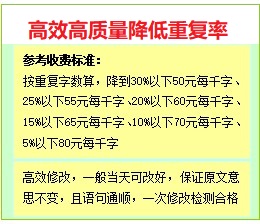The connotation of white in Chinese also includes something unhappy. At funerals, Chinese pay respect to the dead and express their sorrow by wearing white and writing elegiac couplets in white paper. In the West, however, white is the traditional color for the brides at weddings, and to wear white at funerals would be offensive. So care should be taken in translating the phrase红白喜事. To avoid misunderstanding, we can put it simply as weddings and funerals. Talking about red and white, there is an interesting coincidence in Chinese and English. In Chinese, those who are popular and find favor with their bosses are called红人(red guy literally). But Irish people call them the white-headed boy. In this sense, red equals white in the two cultures.
在汉语中白色也表示一些不愉快不开心的事情。中国人在葬礼上要穿白色的丧服,用白色的挽联,这一切都是为了表达对死者的尊重和表达他们的悲伤。然而在西方,白色是新娘在婚礼上的传统色,要是在葬礼上穿成白色会很冒犯。因此,在翻译“红白喜事”时要引起足够的重视。为了避免误解,我们可以简单地把它简单的区分为婚礼和葬礼。说谎到红和白,在汉语和英语中有一个有意思的巧合。汉语中,红人是指受欢迎的,深受老板爱戴的人。但是爱尔兰人称呼之为white-headed boy(宠儿)。此时,白色和红色就在两种文化中对等了。
We have a famous drama called《白毛女》. If we translate it literally as 《A White-haired Girl》, those Westerners will be confused and it will be very hard to see the profound meaning behind it;In old China, folks in general were made ghosts, while things have changed a lot in new China.
我们有一个著名的话剧叫“白毛女”。如果我们从字面意思上把它翻译为“白色头发的女孩”,这样会让西方人感到困惑,也很难体现这部作品所要表达的的深刻含义。在旧中国时期,人们迷信通常人死了以后会有鬼魂,
2.3 Black
In both Chinese and English, there are various terms indicating that black often carries a negative meaning: blackmail,blacklist,black-hearted,black market,etc. But in the following sentence, can you guess the meaning? Since he took over the business, the company has been in the black. In the example above, black has a good meaning;running the business profitably.
Besides, black implies gloom, disgrace, misfortune, extreme anger, etc.
在汉语和英语中,众多黑色的词都表示一种消极意义:比如敲诈勒索, 黑名单,黑心的,黑市等等。但在下列句子,你能猜出它的意思吗?自从他接管了业务,公司一直是黑色的。 在上面的例子中,黑色具有良好的意义; 所以它所要表达的其实是:自从他接管公司业务以来,公司一直在盈利。
此外,黑色暗示幽暗、耻辱、不幸、极端愤怒等等。
2.4 Blue
It seems that blue is a favorable word to Chinese;the blue sky, as often as not, can arouse us to yearn for a better future; the blue sea full of uncertainty induces boundless imagination. Naturally, we take it for granted that the famous song Love is Blue equals a romantic love story. In Western culture, however, blue does not associate with happiness and imagination, but gloom and depression.
在汉语中,蓝色往往有美好的含义。蔚蓝的天空往往能唤起我们对美好未来的向往,蓝色的海洋以它的不确定性诱发我们无限的遐想。然而,我们想当然地认为名曲“Love is Blue”就是一个浪漫的爱情故事,然而它真正的含义是“忧郁的爱”。而在西方文化中蓝色不是快乐和想像力的代名词,而是阴暗和沮丧的象征色。
e.g.,He has been in a blue mood (or having the blues) since he knew that his failure in the entrance examination. In this example, those two terms mean a sad or gloomy mood. Similarly, a blue Monday carries the same feeling. Usually after the happy weekends, we are likely to feel reluctant to attend school or go back to work, thus coming the expression-a blue Monday that can be accepted and understood by both cultures.
在得知他高考失败后他情绪一直很低落。在这个例子中,这两个术语都表示悲伤低落的情绪。同样的a blue Monday表达的也是同一种情绪。通常快乐的周末后,我们很可能会觉得不愿回去上学或工作,因此有了这样的说法,这一表达在两种文化中都被人们接受和理解.
Blue is also often associated with high social status or being aristocratic. He is a real blue blood means he is from an aristocratic family. In addition, in U.S., a book with the names of famous figures, especially top government officials, is called blue book.
蓝色也与上流社会地位的人或贵族连系在一起。他出身名门贵族意味着他来自一个贵族家庭。此外,在美国,如果一本书是由名人写的,尤其是政府高官的书,这本书就被称为“蓝皮书”。
2.5 Green
In English, green also indicates lacking in experience, as seen in the phrase greenhand and greenhorn. The former suggests someone who is inexperienced and immature. The latter suggests an immigrant who is not familiar with local customs or untravelled.
By the way, the Chinese expression literally to wear a green hat means to be a cuckold. If we translate it word by word, misunderstanding or confusion will arise.When paired with different words, its meaning is different.
在英语中,绿色也表示缺乏经验,在看看greenhand and greenhorn这两个短语,前者表明缺乏经验或者不成熟,后者表示不熟悉当地风俗的移民.
顺便提一下,在中国literally to wear a green hat这句话表示妻子对丈夫不忠.如果我们逐字逐句的翻译就会出现误解和混淆。Green搭配不同的词其含义也会不一样.
2.6 Yellow
Yellow appears in such Chinese expressions as黄色书刊,黄色电影,黄色音乐. Should they be translated as yellow books, yellow movies, yellow music? Of course not. We can replace 黄色 with filthy, obscene, or vulgar. In English, we have the phrase yellow journalism which lays too much emphasis on scandals or exaggerates the ordinary news to a sensational degree, sometimes even with distortion.
说到黄色,我们头脑里首先会反映出“黄色书刊,黄色电影,黄色音乐”这样的词。那么译成英语时是否直接翻译成yellow books yellow movies, yellow music呢?这样显然是不对的,我们用filthy, obscene, or vulgar这样的词来代替yellow。在英语中有“黄色新闻”一词,它基实是指过分强调丑闻或夸大普通的新闻以达到耸人听闻的程度,有时甚至是扭曲的且失去了其本身的真实性。
Similarly, we have Yellow Pages both in Chinese and English. This is a book with the telephone numbers of different shops, businesses, organizations, etc., arranged in the order of different categories. Yellow Pages is a very useful handbook whose pages are yellow, but the content is not yellow in the Chinese sense.
同样,中英文中还有黄页。它是一本将各商店,公司,.组织的电话号码按分类编排的书。黄页是一种非常有用的用黄色纸张印制黄色手册,但内容就不是汉语中黄色的意思了。
Generally speaking, yellow is to some extent derogatory that carries the connotations of cowardice, jealousy, suspicion and contemptibility.
一般来说,黄色是在一定程度上带有贬义。有怯懦,嫉妒,猜疑和卑鄙的内涵。
2.7 Purple
In English, purple shares the same connotation as that in Chinese language. In the eye of Westerners, purple is the symbol of emperor and power. In particular, the purple refers to the throne of the emperor or the pope. “to be born in the purple” means “to be born in a royal family”; “to be raised to the purple” means “to be promoted to the position as a pope”; “purple passages” means “too florid words”, etc. In Chinese, we have 红得发紫, meaning popular to the extreme. Here, purple indicates the degree of popularity .
紫色在英文和中文中有相同的内涵。在西方人的眼里,紫色是帝王和权力的象征。特别是,紫色还特指皇帝或伯爵的宝座。“to be born in the purple”的意思是“在一个王室家庭出生”,“ to be raised to the purple””,指升为伯爵。“purple passages”是指“太华丽的词语”。汉语中经红得发紫,意思是极受欢迎。在这里,紫色的表示受大众欢迎的程度。
2.8 Grey
Grey is often used to suggest darkness, sullen weather, blue mood or gloomy outlook. For instances, He looks grey and tired. The prospect of the market is grey. He is a grey-haired man now.
灰色通常用于表示黑暗,阴沉的天气,忧郁或悲观的情绪。譬如,他看起来很疲惫。市场前景很低迷。他现在是一个满头白发的老人。 Grey also suggests wisdom and tact, as in the following expressions: grey wisdom, grey matter, and graybeard. 灰色还表示智慧和机智老练,如下面的表达式:智慧,智力,老人。
Other colors have some connotations as well, but will not be discussed here. 其他颜色也蕴涵文化含义,我们就不在这里讨论了。
Chapter 3
According to the above comparison and analysis, we can see that there are distinct differences between the color words in Chinese and English. Sometimes, Chinese may not use the color words when they are used in English expressions and vice versa. Let us see a few examples . a favorite with somebody in power; honor roll; bonus; extra dividend;good luck; one’s face glowing with health; blush;black tea; traffic light。
通过以上的对比和分析,我们可以看到,颜色词的使用在中文和英文之间存在着显着的差异。若一个颜色词在英语表达中被使用,那么中国人可能就不会用了,相反也一样。我们来看看下面这些例子:红人;红榜;红利;红运;红光满面;脸红;红茶;红绿灯。
I believe the above-mentioned examples amply illustrate the point. On many occasions, it is not the basic meaning of the color that functions, but the profound cultural associations related to the color that functions. That is to say, the differences in using color words between Chinese and English stand out when the color words themselves don’t play an important part. Two factors may help to illustrate. First is the language itself. There are many differences in the characteristics of both languages. English words are characterized by flexibility. One word is likely to have different meanings in different contexts. Comparatively speaking, the meaning of Chinese words remains fixed. Chinese is featured by standard, rigor and preciseness in choosing the words. Let’s take the word green for example. Green gains certain new meaning when associated with the phrase green revolution and when it is used alone, it still carries that meaning. However, green in Chinese will lose the meaning unless it is combined with revolution or other words in similar. Second is the factor beyond the language, which includes the cultural factors such as different customs, traditions and cultural background. Wherever the above-mentioned differences exist, the using of the color words can not be the same. Therefore, special attention should be paid in using the color words.
我相信上述例子充分说明了这一点,在大多数情况下颜色词所要表达的并不只是颜色这一单一含义,它还有其隐含的真正含义。所以我们在翻译时要连接上下文和其丰富的文化底蕴。这就是说,在中文和英文中用到颜色词时,其自身其实并没有发挥重要作用。有两个因素有助于说明。首先是语言本身。这两种语言有许多不同的特点。英语单词的特点是灵活性。同一个单词在不同语境下可能会有不同的含义。相对而言,中文的意思却保持不变,中文的特点是严谨规范。咱们以单词“green”为例。当绿色出现在“green revolution”中或与其他类似的词结合起来的时候,它并不是要表达绿色这层意思,它表示新的很好很成功的收益,而当它单独使用时,它所表达的就只有绿色的意思。二是超越语言,它包括诸如不同的风俗,传统和文化背景的文化因素的关系。根据上述担提到存在的差异,颜色词的使用可以完全不一样。因此,我们要特别要注意颜色词的使用。
References:
<<英汉语言文化对比研究>> 李瑞华主编
上海外语教育出版社 1997.3
<<语言与文化>>�英汉语言文化对比 邓炎昌、刘润清著
<<语言与文化>> 顾嘉祖、陆昇
上海外语教育出版社 1990.6
<<英语翻译规律>> 碧青、周丽蕊主编
<<外语教学与研究文档集>>之浅谈“颜色词” 辽宁大学 常虹


